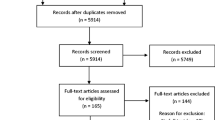Abstract
In the practical training using ICT to learn the basics of industry in elementary and secondary education, it is difficult to operate the screen of the computer while working with both hands using the conventional interface device which operates while holding it in one hand. In response to these problems, we have designed and implemented a prototype of the interface for screen operation which is possible to wear on the back of the hand in our existing study. However, we have found out the problem which is accompanied by the feeling of physical and mental tiredness by becoming conscious of the conventional interface. In this paper, to solve these problems, we proposed and designed the new interface for screen operation that wears one hand and reduces the tiredness despite the use for a long time. Moreover, we conducted comparative evaluation with other interface devices on the reduction of tiredness to use the proposed interface for screen operation by the teachers of industrial education in high school. From the evaluation results, we showed that the proposed interface for screen operation has a high possibility of reducing tiredness in the practical training including work such as the manufacturing compared to other interface devices.











Similar content being viewed by others
References
MEXT (2017) 2016 education science white paper part 2, trend and development of education, science and technology policy part 11, promote utilization of ICT. http://www.mext.go.jp/b_menu/hakusho/html/hpab201701/1389013_018.pdf. Accessed 1 Nov 2018
MEXT (2012) School course guidelines for high school in Japan-industrial edition. http://www.mext.go.jp/component/a_menu/education/micro_detail/__icsFiles/afieldfile/2010/06/01/1282000_13.pdf. Accessed 1 Nov 2018
Hazama H, Ebara Y, Ogasawara T (2017) Development of interface for screen operation to support smooth ICT utilization in elementary and secondary education (in Japanese). In: IEICE technical report vol. 116, no. 517:ET2016-123, pp. 167–172
Sanwa Supply Co (2013) Aerial mouse (400-MA049). http://direct.sanwa.co.jp/ItemPage/400-MA049. Accessed 1 Nov 2018
Logitech Co. (2014) WIRELESS PRESENTER R400. https://www.logicool.co.jp/ja-jp/product/wireless-presenter-r400. Accessed 1 Nov 2018
Okada R, Kazama H, Suzuki T (2010) User interface for PC Hand gesture remote controller (in Japanese). Inst Image Inf Telev Eng 64(12):1812–1815
Ike T, Nakasu T, Okada R (2012) Handgesture user interface using natural hand motions (in Japanese). Toshiba Rev 67(6):36–39
Kokuyo Corporation (2013) KOKUYOSEKI (ELA-FP1). http://www.kokuyo-st.co.jp/stationery/fp/. Accessed 1 Nov 2018
Sanwa Supply Co., Ltd (2016) Ring mouse (400-MA077). http://direct.sanwa.co.jp/ItemPage/400-MA077. Accessed 1 Nov 2018
Asai T, Tagawa Y (2012) Alteration in muscle fatigue caused by load-type differences during isometric flexion of human fingers (in Japanese). Trans Jpn Soc Mech Eng Part C 78(790):217–226
Mitsuda T, Tanaka S (2014) Forelimb muscle activity when presenting a weight sensation by placing pressure on a forearm (in Japanese). Virtual Real Soc Jpn 19(4):449–456
Gokan T (2007) Starting with C language, PIC24F usage guidebook (in Japanese). Gijutsu-Hyohron Co., Tokyo, pp 10–465
Ota S, Jindai M, Yamauchi H, Watanabe T (2015) A mobile handshake robot system for generation of handshake request motion during active approach to a human (in Japanese). Trans JSME 81(825):14-00316
Gokan T (2013) Enjoying with PIC Bluetooth, home-build of Wi-Fi equipment (in Japanese). Gijutsu-Hyohron Co., Tokyo, pp 12–376
Acknowledgements
This work was supported by JSPS KAKENHI, Grant-in-Aid for Scientific Research(C) Grant number JP16K01065.
Author information
Authors and Affiliations
Corresponding author
Additional information
This work was presented in part at the 23rd International Symposium on Artificial Life and Robotics, Beppu, Oita, January 18–20, 2018.
About this article
Cite this article
Hazama, H., Ebara, Y. & Ogasarawa, T. Study on interface for screen operation to reduce tiredness at practical training using ICT in elementary and secondary education. Artif Life Robotics 24, 262–269 (2019). https://doi.org/10.1007/s10015-018-0503-5
Received:
Accepted:
Published:
Issue Date:
DOI: https://doi.org/10.1007/s10015-018-0503-5




